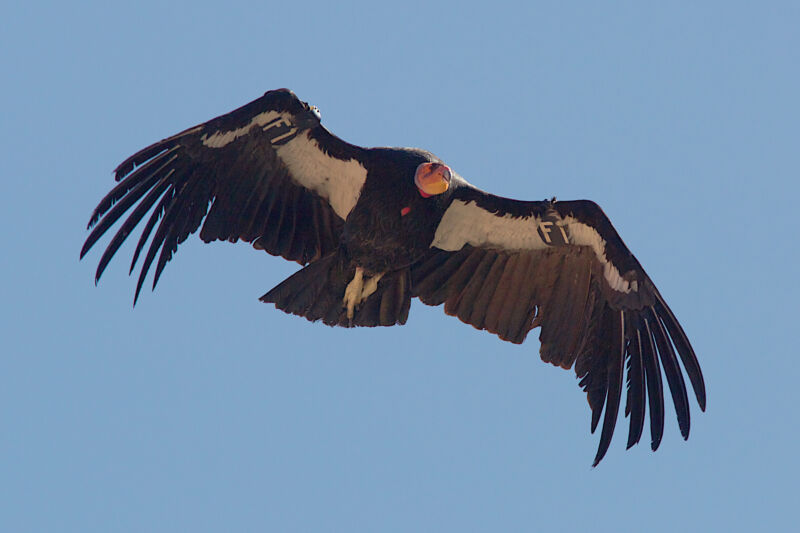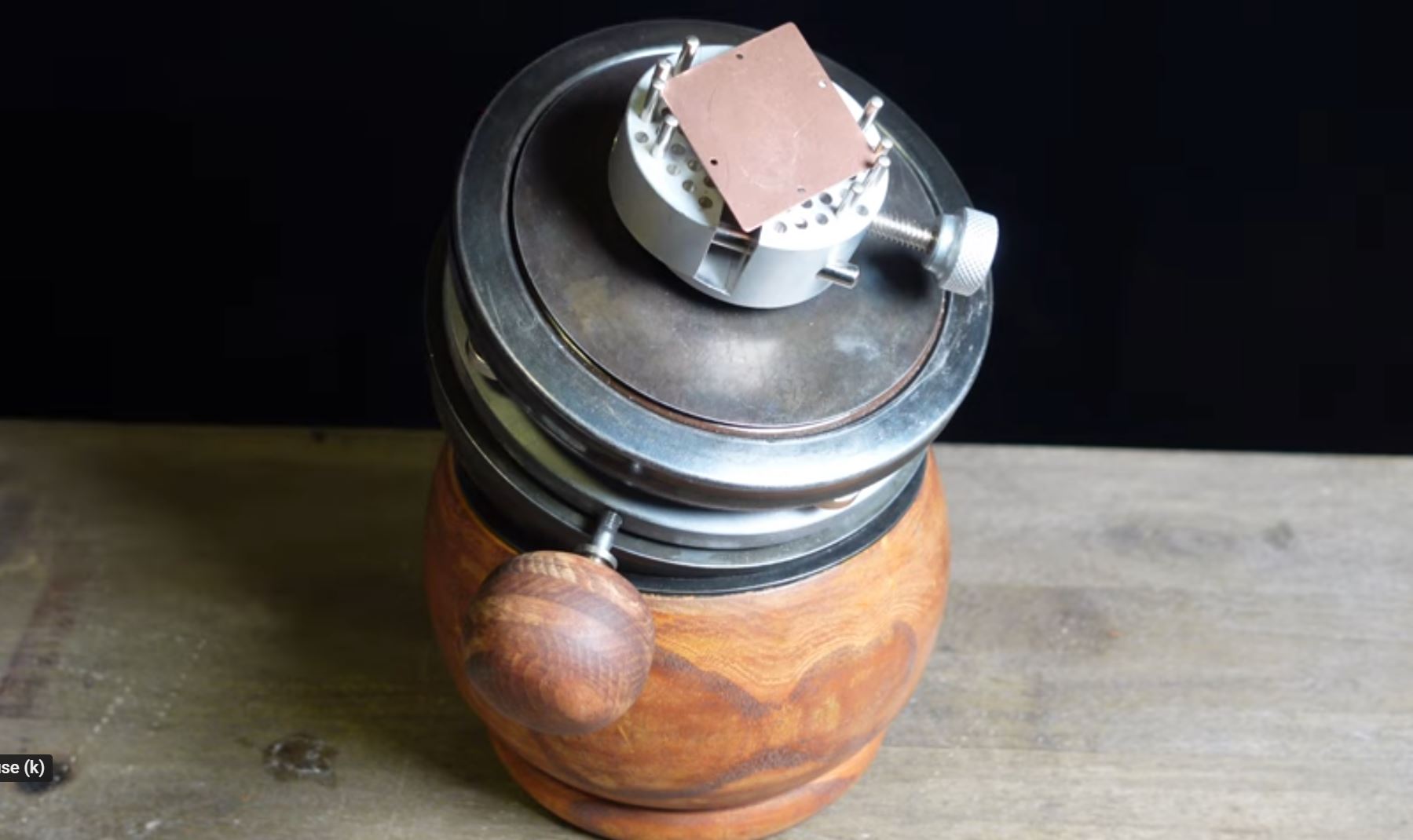How the Yurok Tribe Brings Back the California Condor
 Enlarge / The California condor is a New World vulture, the largest North American land bird. This condor became extinct in the wild in 1987, but the species has been reintroduced to California and Arizona.
Old Fulica/Getty
Enlarge / The California condor is a New World vulture, the largest North American land bird. This condor became extinct in the wild in 1987, but the species has been reintroduced to California and Arizona.
Old Fulica/Getty
The first California condor to reach Yurok ancestral land in over a century arrived by plane and car in late March 2022. The small plane carrying Condor 746 had a hard landing and the bird was irritable. He rocked in a large dog crate on the three-hour drive to the tribe's new condor facility in a remote location in Redwood National Park.
Once there, he jumped into the flying pen, a large wire mesh enclosure, furnished with log perches and a drinking basin. At 8 years old, Condor 746 is an adult, his bare head bright pink instead of the black found in the youngest. He is on loan from the Peregrine Fund World Center for Birds of Prey captive breeding program in Boise, Idaho. His job is to act as a mentor to four juvenile birds who will become the founders of a resurgent condor society in Yurok Country.
"We have mentors because condors are so social," says Joe Burnett, California condor recovery program manager at the Ventana Wildlife Society. Young birds in a pen without an adult will become unruly. "You get lord of the flies syndrome," Burnett says. He and his colleagues quickly realized that release programs need an adult to serve as a role model and enforce the social hierarchy that is crucial to the survival of the herd.
A few days after the 746 arrived, 2-year-old Condor A0 entered the flight enclosure. The first thing she focused on was 746, lying on a perch. Realizing she was in a safe place, A0 checked the food - the carcass of a stillborn calf - then threw herself on a perch and puffed out her feathers, a sign of avian contentment. Three young male condors, labeled A1, A2 and A3, followed. The youngsters had been living together for months at other condor facilities in Boise, Idaho, and San Simeon, Calif., and they already felt comfortable with each other.
Condor, known as prey-go-neesh in the native tongue, is sacred to the Yurok people. The Yurok Reservation sits along the Klamath River in northwestern California, but much of the tribe's ancestral land is now in the hands of government agencies or private landowners. The tribe has been working to bring the condor back to California since 2003, when a group of elders identified the bird as a key cultural and ecological species, and therefore the most important land creature to restore. /p>
Nineteen years after the Yurok made this bold decision, the condors have arrived. Elders who had worked at this pivotal moment watched Tiana Williams-Claussen, director of Yurok's wildlife department, and her colleagues release each newcomer to the enclosure.
Williams-Claussen's job is to understand the details of condor biology and interpret yurok culture for the rest of the world. A member of the tribe, she grew up on the coast near the mouth of the Klamath and went to Harvard University. She had no intention of being a condor biologist, but when she returned in 2007 with a degree in biochemical sciences, condor restoration was the job her people needed. Williams-Claussen has since spent 14 years living and breathing condors, learning how to manage them, partnering with government agencies, and listening to what Yurok elders have to say about the big bird. p>
The California condor is a critically endangered species: in the 1980s, the total population fell to less than 30 individuals. Biologists have concluded that the only chance for the species to survive is to capture all condors alive in order to raise the birds in captivity, away from poisons and power lines.
Reintroducing condors to the wild has proven difficult, however, and the process has become a dramatic lesson for biologists about the importance of parenthood and the slow growth among these long-lived birds and very social. Scientists have learned that time spent with adults is critical to the behavioral development of young condors. They also found that in a species where the adults follow and protect their offspring for a year...

 Enlarge / The California condor is a New World vulture, the largest North American land bird. This condor became extinct in the wild in 1987, but the species has been reintroduced to California and Arizona.
Old Fulica/Getty
Enlarge / The California condor is a New World vulture, the largest North American land bird. This condor became extinct in the wild in 1987, but the species has been reintroduced to California and Arizona.
Old Fulica/Getty
The first California condor to reach Yurok ancestral land in over a century arrived by plane and car in late March 2022. The small plane carrying Condor 746 had a hard landing and the bird was irritable. He rocked in a large dog crate on the three-hour drive to the tribe's new condor facility in a remote location in Redwood National Park.
Once there, he jumped into the flying pen, a large wire mesh enclosure, furnished with log perches and a drinking basin. At 8 years old, Condor 746 is an adult, his bare head bright pink instead of the black found in the youngest. He is on loan from the Peregrine Fund World Center for Birds of Prey captive breeding program in Boise, Idaho. His job is to act as a mentor to four juvenile birds who will become the founders of a resurgent condor society in Yurok Country.
"We have mentors because condors are so social," says Joe Burnett, California condor recovery program manager at the Ventana Wildlife Society. Young birds in a pen without an adult will become unruly. "You get lord of the flies syndrome," Burnett says. He and his colleagues quickly realized that release programs need an adult to serve as a role model and enforce the social hierarchy that is crucial to the survival of the herd.
A few days after the 746 arrived, 2-year-old Condor A0 entered the flight enclosure. The first thing she focused on was 746, lying on a perch. Realizing she was in a safe place, A0 checked the food - the carcass of a stillborn calf - then threw herself on a perch and puffed out her feathers, a sign of avian contentment. Three young male condors, labeled A1, A2 and A3, followed. The youngsters had been living together for months at other condor facilities in Boise, Idaho, and San Simeon, Calif., and they already felt comfortable with each other.
Condor, known as prey-go-neesh in the native tongue, is sacred to the Yurok people. The Yurok Reservation sits along the Klamath River in northwestern California, but much of the tribe's ancestral land is now in the hands of government agencies or private landowners. The tribe has been working to bring the condor back to California since 2003, when a group of elders identified the bird as a key cultural and ecological species, and therefore the most important land creature to restore. /p>
Nineteen years after the Yurok made this bold decision, the condors have arrived. Elders who had worked at this pivotal moment watched Tiana Williams-Claussen, director of Yurok's wildlife department, and her colleagues release each newcomer to the enclosure.
Williams-Claussen's job is to understand the details of condor biology and interpret yurok culture for the rest of the world. A member of the tribe, she grew up on the coast near the mouth of the Klamath and went to Harvard University. She had no intention of being a condor biologist, but when she returned in 2007 with a degree in biochemical sciences, condor restoration was the job her people needed. Williams-Claussen has since spent 14 years living and breathing condors, learning how to manage them, partnering with government agencies, and listening to what Yurok elders have to say about the big bird. p>
The California condor is a critically endangered species: in the 1980s, the total population fell to less than 30 individuals. Biologists have concluded that the only chance for the species to survive is to capture all condors alive in order to raise the birds in captivity, away from poisons and power lines.
Reintroducing condors to the wild has proven difficult, however, and the process has become a dramatic lesson for biologists about the importance of parenthood and the slow growth among these long-lived birds and very social. Scientists have learned that time spent with adults is critical to the behavioral development of young condors. They also found that in a species where the adults follow and protect their offspring for a year...
What's Your Reaction?






















